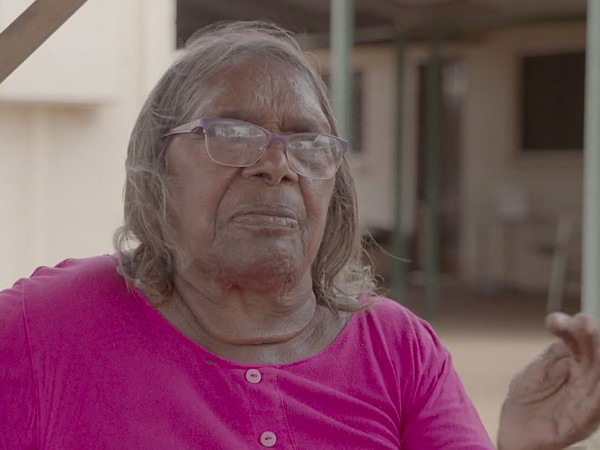Noeli Roberts


Noeli Roberts, a Pitjantjatjara artist, played a significant role in supporting cultural maintenance through the production of videos focusing on local culture, and the development of local radio network through BRACS. He was involved in the production of documentaries focusing on Anangu culture, organising Inma festivals and supporting new-media training programs with Ngaanyatjarra Media. He passed away in October, 2021.
Noeli Roberts was born around 1945 at a rockhole called Ngurpal just inside the South Australian border. “Nyumun is my mother’s country. The other rockholes are Pulka Pulkatjarra, Kapi Wiytjarra, Kuru Ala and Mangu.” Noeli lived a semi-nomadic lifestyle in the desert with his extended family. Food was sourced through hunting and gathering. Depending on an intimate understanding of the environment and traditional skills such as crafting weapons and tracking, the men hunted malu (kangaroo), kalaya (emu), ninu (bilby) and kipara (bush turkey). From animal tracks they could determine how fast a dingo was travelling and where it paused for a moment, or if a perentie (goanna) had eggs in its belly. Sometimes Roberts’ family would walk to the mission at Warburton to trade dingo skins for flour and sugar. When Roberts was still a child his family settled at Warburton and for a while he went to school, then trained as a mechanic and worked on cattle stations in Central Australia.
Noeli was interviewed at Kuruala, where he is a Traditional Custodian, during the filming of the Seven Sisters Dreaming by EVTV.
It’s like this – as everyone got up this morning they were already preparing for the emu Dance. Before the Seven Sisters re-enactment began, the Emu dance opened the ceremonies. We summoned the TV crew to record on camera the song and story of Nyiru, so it can be broadcast on TV and sold on video for everyone to see. When the people see it they will understand, and say ‘I see it now, it is true, Nyiru and the Seven Sisters came to Kuruala’.
This place Kuruala is my mother’s place. It belongs to my mother and all my classificatory mothers. They are the traditional custodians of this area…we sons and daughters are keeping their story, to teach it to our own children, so that they might learn and say ‘They’re keeping their mothers’ story really strong’.
As kids we would watch and listen to our grandfathers who would get up to dance these songs, that people remembered and kept in their heads. Only now have we revealed them, especially for CAAMA, and people are happy because of that.




